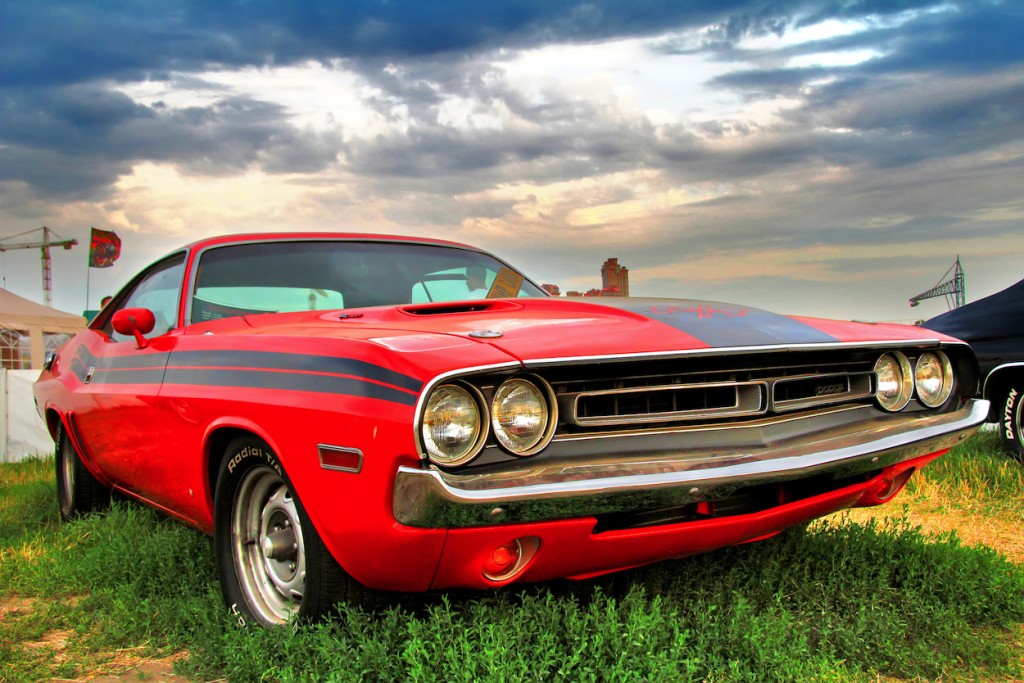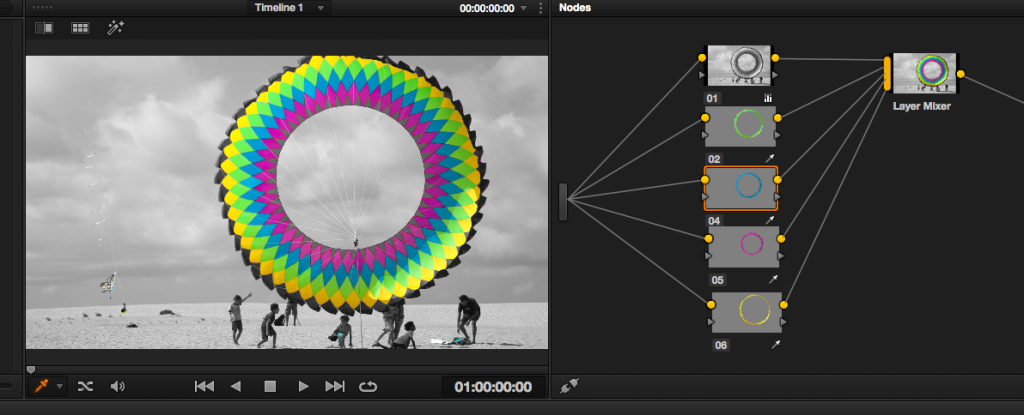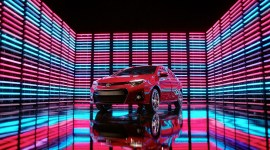
The Isolated Color Look in DaVinci Resolve
The isolated color look is a unique color grade used to great effect in movies like Pleasantville and Sin City. It involves keeping one or several colors intact while completely or partially desaturating the rest of the image. Let’s jump into the grade in DaVinci Resolve.
Achieving an isolated color look is pretty simple in Resolve and involves separating ranges of colors with keys. It works best when there’s an object that’s already naturally separated from the other elements in the scene in hue or saturation amount.
Approaching the Grade in DaVinci Resolve
For this example I chose this vibrant muscle car photo from Shutterstock. The same technique can easily be applied to any photo or video footage:  Perform your base correction just like you would with any other shot, then add a Serial Node to your tree. Select your Qualifier and click and drag to eyedropper across the object. Tight keys are necessary to pull off this effect. To make sure you have all of the object’s values, adjust the Hue Width, Saturation High Clip and Saturation Low Clip to control exactly what you need. Don’t forget to blur your key. Once you’ve pulled a sufficient key, dial in the saturation to your liking and create an Outside Node by pressing Option-O or by right-clicking the qualified node and selecting Add Outside Node. In the new node desaturate the image completely or partially to your desired effect. The keyed element will be the only thing that remains saturated. Success!
Perform your base correction just like you would with any other shot, then add a Serial Node to your tree. Select your Qualifier and click and drag to eyedropper across the object. Tight keys are necessary to pull off this effect. To make sure you have all of the object’s values, adjust the Hue Width, Saturation High Clip and Saturation Low Clip to control exactly what you need. Don’t forget to blur your key. Once you’ve pulled a sufficient key, dial in the saturation to your liking and create an Outside Node by pressing Option-O or by right-clicking the qualified node and selecting Add Outside Node. In the new node desaturate the image completely or partially to your desired effect. The keyed element will be the only thing that remains saturated. Success!
Here’s a quick pass of the image. Note that some of the stuff in the back would have to be taken care of since the qualifier is grabbing the same shades of red. You can use a polygonal vignette to cut out the car, and use the tracker for a moving shot.  Here are the values on my qualifier:
Here are the values on my qualifier: 
Advancing the Isolated Color Look in DaVinci Resolve
Let’s explore the isolated color look on an image of a multicolor kite. After you’ve performed your base correction, add another Serial node and then a Layer Mixer from the Node menu. The tree should look like this:  This node looks like a Parallel node structure but functions differently. A Parallel node will combine corrections in the stack. A Layer Mixer will prioritize the bottom correction which better suits our purposes for this particular look. Pull a key for one of the colors in the bottom node. As before expand the range by using the Hue Width and pay attention to your high and low saturation amounts. When you’ve got the key refined, desaturate the top node. Due to the way the Layer Mixer works, the color in the second node stays where it is. From here you can add any number of parallel nodes to the tree to continue bringing out just the colors you want. Here’s what my node tree ended up looking like:
This node looks like a Parallel node structure but functions differently. A Parallel node will combine corrections in the stack. A Layer Mixer will prioritize the bottom correction which better suits our purposes for this particular look. Pull a key for one of the colors in the bottom node. As before expand the range by using the Hue Width and pay attention to your high and low saturation amounts. When you’ve got the key refined, desaturate the top node. Due to the way the Layer Mixer works, the color in the second node stays where it is. From here you can add any number of parallel nodes to the tree to continue bringing out just the colors you want. Here’s what my node tree ended up looking like: 
Practical Application of the Isolated Color Look in Resolve
Okay, we’ve got our very stylized effect, but can this technique be used in a typical commercial job? I’ve found it is especially useful for product shots, where very saturated, vibrant colors are in play on the product in question. Often, a bottle or pack already looks great from an art direction standpoint, it just needs a little sweetening. Cameras tend to capture a product’s near-neon colors at a lower saturation since most colors in nature are not so cranked. This is actually a good thing, since the last thing you want is clipped colors. Clients will always want you to pump the colors and to skew them to the right hue. Product shots are a perfect application for this type of node structure. You can just punch up the specific colors in the bottle without affecting much else. It also serves as a way of organizing all the layers that just pertain to the product. Show us links to your examples of isolated color styles in the comments!





